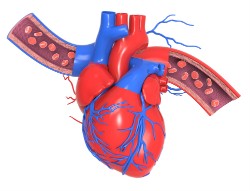Is interval fasting suitable for women and which scheme should I choose?
Periodic (interval) fasting has been gaining particular popularity in recent years. It has been proven that it allows not only to reduce body weight, but also to prevent many diseases.
However, according to research, the effect of interval fasting on women differs from that on men. A special individualized approach is required to the female body.
Content
What is interval fasting?

Interval fasting is the alternation of periods of eating with periods of fasting. Usually, food is taken at certain (well-defined) time intervals.
A distinctive feature from most other diets is the absence of the need to track the energy value and qualitative composition of food. It is only important to observe the time interval between fasting and eating.
As we know from the last article, interval fasting is extremely beneficial for the body . It allows you to reduce body weight, improve the health of the nervous, cardiovascular, endocrine and digestive systems, prevent the manifestation of malignant neoplasms and premature aging.
How does it affect women?
 According to the latest accumulated scientific data, interval fasting is less beneficial for the female body than for the male.
According to the latest accumulated scientific data, interval fasting is less beneficial for the female body than for the male.
For example, American specialists conducted an experiment , where a group of men and women followed the protocol of &171;Fasting every other day&187; &8212; one of their most &171;extreme &187; methods of interval fasting, which involves periods of hunger up to 36 hours. Against the background of 3 weeks of compliance with this protocol, a violation of glucose tolerance was noted in women. There were no statistically significant changes in men.
Also, the female body is more sensitive to changes in the caloric content of the diet. With a slight intake of nutrients, damage to the hypothalamus is observed, which negatively affects the secretion of a number of hormones.
Polish scientists discovered decreased secretion of gonadotropin-releasing hormone, which stimulates the release of follicle-stimulating and luteinizing hormones into the blood, responsible for the work of the reproductive system and fetal development. The absence of these substances is also fraught the development of infertility, osteoporosis and other adverse effects.
Experiments on rats also demonstrate that only 3 months of fasting lead to a marked decrease in ovarian volume.
It is important to note that all experiments evaluated fairly extreme fasting techniques. And they turned out to be much less useful for women than for men. But more gentle protocols are quite safe for women and can bring tangible benefits.
Which scheme should I choose?
 The female body requires a more "mild" fasting regime, which can significantly reduce the risk of adverse reactions.
The female body requires a more "mild" fasting regime, which can significantly reduce the risk of adverse reactions.
The following are the main protocols that will suit women:
- The Crescendo method. This is the mildest scheme, which involves fasting for 12-16 hours 3 times a week. Usually, fasting/eating hours are distributed as follows: 12/12, 14/10, or 16/8. It would be wise to start with 12 hours of fasting and gradually move to 16 hours. The days of abstinence from food should be evenly distributed (for example, Monday-Wednesday-Friday).
- Protocol 16/8. This is the most common and studied protocol, according to which you need to fast for 16 hours a day, and eat for 8 hours. You can observe it every day. If there are no contraindications, it is considered safe enough, including for the female body.
- The 5:2 diet. According to this protocol, you can eat 5 days a week without restrictions, and within 2 days you need to greatly reduce the calorie content of the daily diet – up to 500 kcal (for women) and up to 600 kcal (for men).
- Modified protocol &171;Fasting every other day&187;. You need to fast every second day (today you are starving, tomorrow you eat normally, the day after tomorrow you are starving again, and so on). The difference between the modified version and the classic one is that on fasting days you do not give up eating completely, but limit your diet to about 25% of your normal daily calorie content (up to about 500 kcal).
- Eat-stop-eat. This is a classic 24-hour abstinence from food. You need to fast 1-2 times a week, and eat normally on the rest of the days. Beginners (and especially female beginners) should definitely start with 12-14 hours of fasting, gradually increasing this time interval.
Where to start?
 It's not even necessary for beginners to choose a protocol. To begin with, you can simply give up food for a certain period of time. In fact, the body is already ready for such changes.
It's not even necessary for beginners to choose a protocol. To begin with, you can simply give up food for a certain period of time. In fact, the body is already ready for such changes.
Anyone can systematically skip a meal for breakfast or dinner due to high employment, etc.
The first step of fasting is to refuse any meal during the day, then two meals, and then – according to a certain pattern.
It is extremely important to adhere to the chosen scheme, since sharp fluctuations in the time interval allotted to eating can negatively affect the functioning of the body and lead to adaptation disorders.
5 useful properties
Despite the limitations, interval fasting can bring tangible benefits to women. The main positive effects are discussed below.
1. Improving the health of the cardiovascular system
 Periodic fasting affects several risk factors for the development of diseases from the heart and blood vessels at once.
Periodic fasting affects several risk factors for the development of diseases from the heart and blood vessels at once.
American studies demonstrate that the diet can reduce systolic and diastolic blood pressure by 6% in just 2 months.
Also proven that interval eating leads to reduction of total cholesterol , as well as its atherogenic fractions – LDL – by 25% and TAG – by 32%.
The combination of the effects described above prevents the earlier development of hypertension, as well as diseases associated with atherosclerosis (coronary heart disease, chronic cerebral ischemia, myocardial infarction, strokes, etc.).
2. Prevention of type II diabetes mellitus
 Alternating periods of hunger and eating leads to a decrease in the concentration of glucose and insulin in the blood, while is celebrated
improvement of carbohydrate absorption by peripheral tissue cells.
Alternating periods of hunger and eating leads to a decrease in the concentration of glucose and insulin in the blood, while is celebrated
improvement of carbohydrate absorption by peripheral tissue cells.
Researchers from the USA installed that dieting for 8-12 weeks leads to a decrease in insulin levels by 20-31%, and glucose levels by 3-6% in people with diabetes or having prediabetic conditions (impaired glucose tolerance, fasting hyperglycemia).
3. Weight Loss Aid
 Works of scientists from the UK show
that intermittent fasting really helps to reduce body weight in women. Over a period of 3 to 12 months, the weight is reduced to 7 kg.
Works of scientists from the UK show
that intermittent fasting really helps to reduce body weight in women. Over a period of 3 to 12 months, the weight is reduced to 7 kg.
The positive effect is due to a wide range of reasons, the main of which are:
- Acceleration of metabolism. Foreign specialists proved that periodic fasting accelerates metabolism by 3.6%.
- Decrease in insulin secretion. This process leads to activate the breakdown of adipose tissue and inhibit the synthesis of fatty acids in the liver.
- Increased secretion of somatotropic hormone and norepinephrine . Similar biologically active substances several times increase the rate of destruction of adipocytes.
- Satisfying hunger. After 2-3 days, the body begins to tolerate fasting better, and on the 7th-10th day it completely gets used to it.
It is important to note that interval fasting (unlike most other diets) it does not lead to a decrease in the mass of muscle tissue, which was proven by American specialists.
4. Cancer prevention
 Cancer is an extremely common disease in which individual groups of cells begin to divide uncontrollably and destroy all surrounding tissues.
Cancer is an extremely common disease in which individual groups of cells begin to divide uncontrollably and destroy all surrounding tissues.
Systematic starvation alters the work of genes responsible for the development of malignant neoplasms.
According to the data According to scientists from the United States, a temporary refusal to eat increases the survival rate of rats suffering from cancer several times.
Specialists from France also proved that the diet is able to enhance the effect of a number of chemotherapeutic agents.
5. Normalization of the brain
 Fasting contributes to the normalization of metabolic processes at the brain level. The group primarily includes: suppression of chronic inflammation and free radical mechanisms, increased glucose absorption.
Fasting contributes to the normalization of metabolic processes at the brain level. The group primarily includes: suppression of chronic inflammation and free radical mechanisms, increased glucose absorption.
Temporary hunger increases the production of BDNF, the lack of which is directly related to depression and similar mental disorders.
Animal experiments demonstrate that temporary fasting reduces the likelihood of developing a fatal outcome when foci of ischemia (stroke) appear.
Specialists from the National Institute on Aging (USA) discovered that fasting can delay the manifestation of Alzheimer's disease and improve its clinical course.
Side effects and contraindications
 Any diet is fraught with the development of undesirable reactions. The most common side effects are:
Any diet is fraught with the development of undesirable reactions. The most common side effects are:
- Headaches.
- Constipation.
- Sudden mood swings.
- Depression of mental and physical performance. Weakness, weakness.
- Menstrual irregularities.
With the development of any side effects, it is recommended to temporarily abandon fasting and seek medical help from a specialist.
Also, you should not follow a diet if there are contraindications:
- Body weight deficiency (weight deviation of more than 15% of the norm or body mass index (BMI) less than 18.5).
- Tuberculosis of any organ system.
- Type I diabetes mellitus.
- Any thyroid pathology accompanied by a hyperthyroid background.
- Heart rhythm and conduction disorders (special attention is paid to AV blockades of II and III degrees).
- Condition after myocardial infarction (for 30 days).
- Chronic circulatory insufficiency. Degree – from IIb to III.
- Chronic viral hepatitis (any phase of the course).
- Chronic alcoholic hepatitis (in the acute phase).
- Cirrhosis of the liver.
- Chronic liver or kidney failure of any origin.
- Thrombophlebitis.
- Chronic gastritis in the acute phase.
- Acute pancreatitis.
- Arterial hypotension.
- Cholelithiasis, as well as diseases accompanied by obstruction of the biliary tract.
- Peptic ulcer of the stomach and duodenum.
- Pregnancy.
- Lactation period.
- Age less than 14 years or more than 75 years.
What to remember
- Thus, interval fasting is a useful method of changing the way you eat. The technique allows you to reduce body weight, ensure the prevention of diabetes mellitus, as well as oncological and cardiovascular diseases.
- Since prolonged abstinence from eating can harm the female body more than the male, they need a more gentle approach. There are many different options for fasting protocols, each with its own advantages and disadvantages.
- The main thing to do before starting periodic fasting is to familiarize yourself with contraindications and side effects. If necessary, enlist the support of a specialist.

